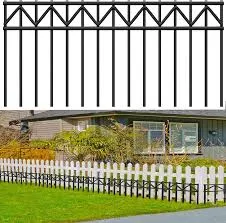
aug . 30, 2024 02:36 Back to list
CE Certified Welded Wire Fencing Solutions | Premium Quality & Durability
Understanding CE Certification for Welded Wire Fence
In the world of construction and fencing, ensuring the quality and safety of materials is paramount. One way to guarantee these standards is through CE certification, particularly for products like welded wire fences. This article explores what CE certification is, why it matters, and how it applies to welded wire fencing.
What is CE Certification?
CE marking is a certification mark that indicates a product's compliance with safety, health, and environmental protection standards set by the European Union (EU). CE stands for Conformité Européenne, which is French for European Conformity. It is mandatory for many products before they can be marketed in the EU, ensuring that they meet specific requirements.
For welded wire fencing, CE certification demonstrates that the product adheres to applicable European directives, such as the Construction Products Regulation (CPR). This regulation lays out the performance characteristics that construction products must meet to protect public health and safety.
Importance of CE Certification for Welded Wire Fences
1. Quality Assurance CE certification provides assurance that the welded wire fence has undergone rigorous testing and meets high-quality standards. This is particularly vital in construction and agricultural applications where the integrity of the fence could impact safety and security.
2. Market Access For manufacturers, obtaining CE certification is crucial for accessing European markets. It allows them to sell their welded wire fences across EU countries without being subjected to different national regulations, streamlining the process of bringing products to market.
3. Consumer Confidence Consumers are increasingly aware of product quality and safety. A CE mark on welded wire fencing gives consumers peace of mind, knowing that the product has been evaluated for safety and performance. This can significantly influence purchasing decisions, enhancing the brand's reputation.
ce certification welded wire fence

4. Regulatory Compliance CE certification ensures compliance with diverse regulatory frameworks in the EU. For instance, it assures that welded wire fences conform to EN 10223 and EN 1461 standards, which relate to the quality, durability, and function of fencing materials.
CE Certification Process for Welded Wire Fence
The CE certification process for welded wire fences typically involves several key steps
1. Product Testing Manufacturers must subject their products to various tests to evaluate performance qualities like durability, resistance to corrosion, and structural integrity.
2. Documentation Once testing is complete, manufacturers must compile technical documentation that details the design, manufacturing processes, and how the product meets the necessary standards.
3. Declaration of Performance (DoP) The manufacturer must prepare a DoP, which declares that the welded wire fence complies with relevant European standards.
4. CE Marking After successful assessment, the product can be affixed with a CE mark, signaling compliance to retailers and consumers.
Conclusion
CE certification for welded wire fences plays a crucial role in ensuring product quality and safety in the construction and agricultural sectors. By adhering to established EU regulations, manufacturers can enhance their market reach while providing consumers with reliable and safe fencing solutions. As demand for quality construction materials continues to rise, understanding and pursuing CE certification will remain vital for stakeholders in the welded wire fence industry.
-
Powder Coated Double Wire Mesh Fence- Anping County Shengxin Metal Products Co., Ltd|Durability, Customization, Eco-Friendly
NewsAug.05,2025
-
Powder Coated Double Wire Mesh Fence-Anping County Shengxin Metal Products|Durability&Customization
NewsAug.05,2025
-
Powder Coated Double Wire Mesh Fence Germany Market - Anping
NewsAug.05,2025
-
Durable Chain Link Temporary Fence | Quick Setup & Security
NewsAug.05,2025
-
Coated Galvanized Steel Wire Mesh Fencing Panels | Durability & Protection
NewsAug.04,2025
-
Powder Coated Double Wire Mesh Fence-Anping County Shengxin Metal Products Co., Ltd
NewsAug.03,2025
